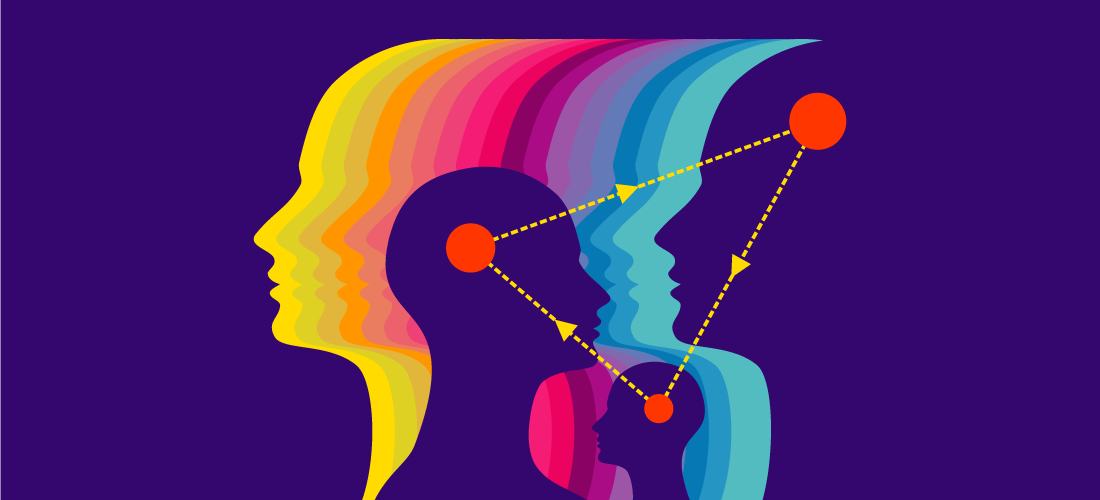Customer Experience (CX) has moved beyond buzzword status. Today almost all organizations are laser-focused on trying to deliver customer experiences that truly differentiate their businesses. By that I mean creating the type of customer-driven company that doesn’t just please customers, but gives them exactly what they need and want time, after time, after time in an effort to establish customers for life.
It’s not easy. It’s not often achieved. But, it is possible. To be successful in today’s über-competitive online and global marketplace, you MUST be committed to creating an emotional connection between your customers and your brand.
That’s right. A strong emotional connection is what will have people talking about you, paying more for your products or services, and walking past your competition to get to you. In other words, that emotional connection you make is where customer loyalty lives.
It is your company’s fingerprint, individual to you and your business.
I believe so much in the importance of creating emotional connections that I wrote my latest book,720 Haircuts: Creating Customer Loyalty that Lasts a Lifetime, on this very topic. Here’s an excerpt from Chapter 2, “The Customer Experience Revolution: We’ve All Been “Starbuckized.”
To understand the importance of the Customer Experience today, we need to take a deeper look at the past.
During the first half of the 20th century, retailers focused on creating loyal customers by establishing an emotional connection. In a bricks-and-mortar store, this was done face-to-face, but it was quite possible to do it another way – through mail order, the ancestor of online shopping.
One of the best examples of a company that built an emotional connection to its brand was Sears and Roebuck, originally a mail-order business. You could order just about anything from the Sears catalog, from clothing to housewares to farm tools. (Does this sound familiar, Amazon shoppers?)
And as for an emotional connection? Well, when the Sears catalog arrived in the mail, that was a good day! For most people, rural or not, this was their basic link to the latest trends, their window into everything from the current fashions to technological advancements. It was literally a “mall in a mailbox.” No matter your age, geographic location, or economic status, that catalog bonded people – farmers with bankers, generations of all ages, and faraway friends. Everybody loved it. And they remained loyal customers for life.
Up through the 1950s, women who worked in the home were called “housewives” or “homemakers,” and they made an art form of running a household and managing a family. Those were the days when people actually changed drapes in the spring and fall, when there was a difference between “play clothes” and “school clothes.” Moms stayed home to manage the house and family, dads worked from 9 to 5 without ridiculous extra hours or weekend travel, and going out to eat was for special occasions only.
For the most part when people shopped in stores, it wasn’t for fun; it was for a purpose. “Retail therapy” wasn’t for the masses. During the Great Depression and World War II, people had learned to be frugal. The average family had a budget. Mom carefully planned a weekly menu and visited the grocery store just once a week. She shopped at an independent market where the owner knew her name, gave recommendations, and likely checked her out and bagged her groceries. People shopped for clothing for a season at a time – the four seasons being winter, spring, summer, and “school.” And shopkeepers delivered a quality Customer Experience with a personal touch.
The satisfying Customer Experience of those early years all but disappeared during the social upheaval of the 1960s and ’70s. The 1960s had been a sort of boom time economically, but the 1970s took a financial u-turn. Prices went up, commodities went down, and no one’s salary was increasing. Women left their aprons in the kitchen and joined the workforce to add to the family income – but they were still running their households, resulting in a huge time crunch. A dual-earner household required speed and in-the-moment convenience. Mothers, and now dads, became over scheduled and needed to get more done in less time at a lower cost.
At the same time, the Women’s Liberation Movement was in full swing. Following the fight for Civil Rights, women were stepping up to claim an equal place in businesses. Nearly every advertisement for women’s products highlighted this, from Virginia Slims cigarettes’ slogan, “You’ve Come a Long Way, Baby,” to Enjoli perfume, whose theme song included the lyrics, “I can bring home the bacon, fry it up in a pan, and never let you forget you’re a man.” Helen Reddy’s #1 hit song of 1972, “I Am Woman,” became the de facto anthem for millions of women who were striving to expand their horizons past the white picket fence.
So no matter what the reasons – economic need, convenience, time crunch, empowerment, or all of the above – the world was changing. These unprecedented shifts in marketplace forces required an unprecedented response from the business world. Women were entering the workforce just as the economy was turning sour. The convenience needs of the American family soared, and businesses saw the economies of scale and greater levels of profitability that could be reached with new store formats and in different shopping venues.
Changes in the Game of Retail
Those downtown stores that opened at 9 and closed at 5 eventually went out of business. Giant shopping malls started popping up everywhere. They housed multiple shoe stores, department stores, jewelry boutiques, and bookstores, where consumers could compare similar products before deciding what to purchase.
Consumers were shopping in a new way, and retailers were staffing to meet the changing needs. To offer what consumers now demanded – speed, convenience, and low prices – retailers no longer hired “career shopkeepers” who took pride in sharing their expertise, being a trusted advisor who spent time with each customer. Instead, they hired hourly workers who were simply seeking a paycheck. Hourly employees weren’t required to be enthusiastic or knowledgeable about what they were selling. They were warm bodies who were merely expected to efficiently process a customer and move on to the next person in line.
The average consumer wasn’t expecting personal service at this time. The rules were different.
Today’s customer wants the satisfying customer experience of yesteryear along with speed and convenience, and they want to fall in love with the companies they are doing business with. Yes, fall in love! “I love Starbucks,” “I love Amazon,” “I love Disney.” The word love in combination with a company is commonplace today and it’s because these companies are offering a differentiated experience. Customer experience is the final frontier. Those businesses that don’t focus on delivering a differentiated customer experience, those companies that don’t have a customer-first culture, end up in the graveyard of failed businesses . . . and there is always room for an extra headstone.
So, let me ask you this: What if all your customers fell in love with your business and the experience that you created for them? What if their love was so deep they would pay more, drive farther, and literally step over your competition to get to you? What if your customers shopped with you with their emotions as well as their wallets?
Trust me, this is possible! Take my Uncle Mel for example. For the last 60 years, he has visited the same barbershop, without fail, for his monthly haircut. The location and the employees have changed over the years. But no matter where he’s lived, from a few blocks away to over a 100-mile round trip, he has been unwavering in his loyalty. Twelve haircuts a year for 60 years … that’s 720 haircuts – and counting!
And believe it or not, ANY brand is capable of generating this type of loyalty. Over the years, I’ve learned from some of the best companies that there are simple yet essential elements to inspiring loyalty. Yes, there is a proven formula! And establishing an emotional connection with your customers is paramount. Start there and you’ll be on your way to achieving the ultimate in customer experience.






